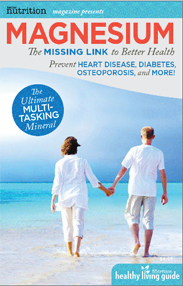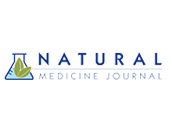ADHD: Causes and Possible Solutions
At a conference on “Attention Deficit Hyperactivity Disorder: Causes and Possible Solutions,” sponsored by The Georgetown University Medical Center Office of Continuing Professional Education, nutritional deficiencies in American children were vividly described by Donald R. Davis, PhD, a co-worker of the late Roger J. Williams, PhD, author of the book, Nutrition Against Disease. Dr. Davis spelled out the low levels in the American diet of many essential nutrients and pointed out, in addition, that we are just beginning to learn the benefits of hundreds of phytochemicals (from plant foods). He stated: “Do low nutrient levels, or low phytochemical levels, contribute to the problems of ADHD? I don’t know, but I think it is likely that they do.” He pointed out that these low intakes of nutrients and phytochemicals “are caused primarily by heavy consumption of refined (non-whole, or ‘dismembered’) foods.” Three kinds of non-whole foods: “refined sugars, added fats and oils, and white flour and rice . . . contribute well over 50% of the dry weight and calories of the American food supply.”
Leo Galland, MD, pointed out specific nutrients that have been found low in children with ADHD, who then have been helped by appropriate changes in their diet and by supplements:
* B vitamins: “Children with ADHD reacted variably to different B vitamins. Some children became more hyperactive with pyridoxine [vitamin B6] but became calmer when thiamine [vitamin B1] was administered. Some children whose behavior improved with pyridoxine supplementation, deteriorated when thiamine was administered. These differences appeared to be stable over time.”
* Essential fatty acids (EFAs): Investigators have found significantly lower levels of essential fatty acid metabolites in hyperactive children compared with controls without ADHD. Excessive thirst without excessive urination along with dry skin and hair are symptoms characteristic of essential fatty acid deficiency in animals and are frequently seen among hyperactive children with learning and behavior problems. Some studies have used just one fatty acid and found “minor positive effects.” A recent study used both evening primrose and fish oils and got good behavioral responses with children having EFD deficiency symptoms (thirst, dry skin and hair).
* Magnesium: Clinicians in Europe have found lower than normal levels of magnesium in red blood cells of people with ADHD. Low magnesium results in a syndrome of abnormalities including irritability, restless sleep, muscle tensions with spasms, and poor exercise tolerance. The low level results obviously from low dietary magnesium. However, there can also be a genetic predisposition to low magnesium as well as magnesium-depletion caused by certain stress-induced hormones, “which are elevated in blood and urine of children with ADHD. . . . Recently, a Polish team found reduced magnesium levels in 95% of a group of 116 children with ADHD. . . . [Levels] of magnesium [corresponded] with degree of distractibility. Treatment was administered to 50 children with low blood and hair magnesium with 200 mg magnesium daily for 6 months. Compared to a control group given ‘standard therapy’ without magnesium, the supplemented children showed a significant decrease in hyperactivity.”
* Other nutrients: Zinc is often low in hyperactive children. One study indicates that iron supplementation could help children with ADHD, whose iron status is marginal. Some amino acids are low in patients with Attention Deficit Disorder (ADD). Dr. Galland recommended further research with certain amino acids “especially with children with both ADHD and learning disabilities.”
Stephen Schoenthaler, PhD, summarized his extensive studies improving the diets of school children and also of incarcerated criminals. The children showed impressive gains in learning ability. In studies where the criminals were randomly assigned to a vitamin-mineral supplement group or to a control group, who received placebos, the subjects receiving the active pills became significantly less violent and also participated in significantly less antisocial behavior.
Article from NOHA NEWS, Vol. XXV, No. 1, Winter 2000, pages 1-3.
*On November 4-7 your editor attended a conference on “Attention Deficit Hyperactivity Disorder: Causes and Possible Solutions,” sponsored by The Georgetown University Medical Center Office of Continuing Professional Education and co-sponsored by The International Center for Interdisciplinary Studies of Immunology, Georgetown University Medical Center, and the International Health Foundation, Jackson, Tennessee. This article is a brief summary of the many fascinating presentations.
Article from NOHA NEWS, Vol. XXV, No. 1, Winter 2000, pages 1-3.
Newsletter
![]()

Want valuable information regarding the health benefits of magnesium, latest studies, expert interviews,videos and health tips? Enter your name and email address and you can start receiving valuable health information right away.
Featured On:








